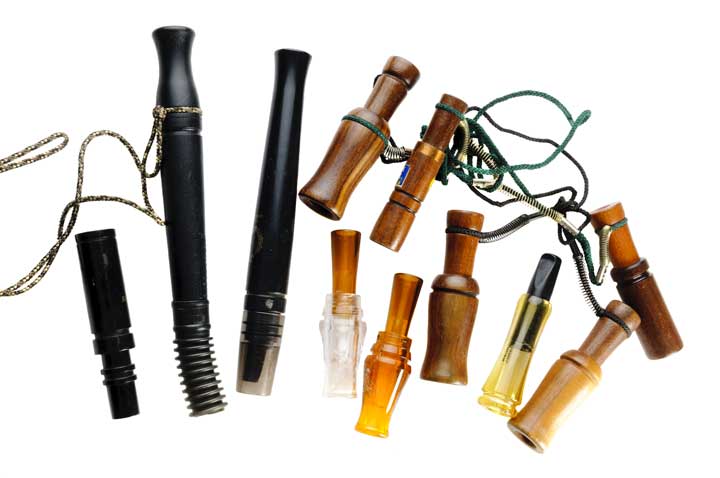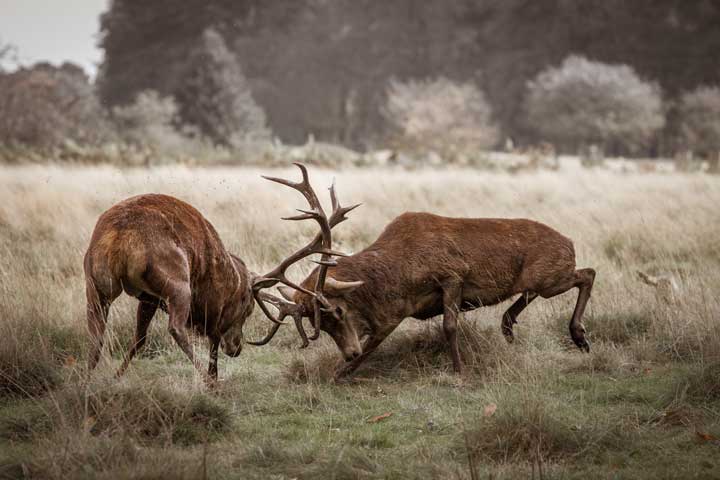Many inexperienced hunters think that you can simply use a deer call to automatically draw any deer to your hunting zone at any moment. It took me a long time to realize that there’s a lot of technique, knowledge, and timing in learning how to call deer.
Deer use sound to communicate with other deer along with scent, so these two elements can be critical components to bolster your hunting game. However, it takes quite a bit of practice to master the call, and even the best of the best have a low success rate.
But it doesn’t hurt to try, so let’s talk a little more about how to use a deer call and when it’s most effective.
How Can You Attract a Deer to You?
There are a few different methods you can use to attract a deer to your hunting location. The most common ways to do this are:
For today, we’re going to focus mainly on deer calls. Towards the end, we’ll touch on attractants as well, as they can be super helpful in deer hunting seasons and in combination with calling deer.
Deer calls are performed by using a mouthpiece to mimic the sounds that deer make. Does and bucks communicate through bleats and grunts, respectively. With some practice, you can copy these sounds using a deer call to attract your prey of choice.

When is it Best to Use a Deer Call?
The best time to use deer calls is during the pre-rut and the rut, or the mating season. Deer become particularly vocal throughout mating activities, so using a call may be beneficial to your hunt.
During the late season, a buck may be too tired to care about exploring your calls. However, it’s still worth a shot as some bucks may still be able to breed.
What is the Best Way to Call a Buck in?
The best way to call a mature buck in is by using a doe-in-heat bleat during the mating season. However, using a combination of deer sounds will be most effective.
Some hunters have found great success in combining the three most common calls:
- Lost-fawn bleat
- Doe-in-heat bleat
- Buck grunts
This combination, in that order, replicates a situation where a doe has left her fawn behind in order to breed. The buck grunts indicate that there is competition for the doe and can cause a mature buck to come looking for her.
Additionally, a deep, loud grunt can also indicate an aggressive buck looking for a fight in a rival buck. This call can also draw bucks towards you.
Finally, you can try to lure a nearby buck by deer calling a doe. Use a fawn-in-distress bleat to attract a doe. During mating season, there’s a chance a buck will follow the doe you’ve called.
How Do You Call a Deer in Early Season?
The early season is perhaps the worst time to use a deer call. In the early season, bucks are not as aggressive and don’t respond to antler rattling. Likewise, it’s too soon for females to be bleating.
Your best bet at attracting a deer in the early season is fooling a young buck with simple contact grunts from bucks or does. This type of social call might pique a deer’s interest, but you’ll have better luck focusing on food sources in the early season.
How Do You Call in a Buck During the Rut?
During the rut, does are coming into heat, which means the bucks are very actively looking for a mate. This is your best bet for an effective buck call.
There are three essential tools to use to call a buck during the rut:
Can calls can be used to mimic both fawns and does. You can replicate a fawn’s cry for their mother, as well as a doe’s heat bleating. Letting out some doe can calls can attract a buck looking to mate.
Grunt tubes let you imitate the grunt of an active and aggressive buck. Bucks grunt during the rut to assert their dominance while attracting nearby potential mates. Using a buck grunt tube can encourage bucks to challenge what they think is another buck, drawing them to you.
Rattling antlers also mirror the realistic sound of buck fights. If a buck hears a scrap going on, they may come to the area to investigate or defend their territory.

Can You Grunt Call a Whitetail Buck?
Before learning how to call white-tailed deer, it’s important to first differentiate between blind calling and a specific calling sequence. Blind calling happens during the pre-rut when you cannot see the deer you’re calling to. During specific deer calling, you can see the buck and have to read and react to the deer’s body language.
Grunt calling from an area with heavy coverage is your best bet. If a buck can see you, he will figure out where you are and will avoid the area. Heavy coverage makes a buck feel safe and he will be more likely to come investigate the call.
How Far Can a Deer Hear a Grunt Call?
If your positioning, terrain, and wind are all on point, a deer can hear a grunt call from as far as 125 yards. The best way to get your call across effectively is to ensure you’re close enough for a deer to hear, but far enough that your call doesn’t scare it.
What is the Best Way to Attract Deer Quickly?
Some hunters like to use deer attractants to bring deer to them quicker. An attractant counts on the incredible sense of smell that a deer possesses to attract them to a particular location. This same sense of smell is why it’s so important for hunters to eliminate any human scent from themselves and their clothing.
There is a wide array of attractants to choose from, including sprays and liquid deer urine. You can also choose from seeds, gels, and deer cane mixes. Distributing these evenly around your hunting area can help draw deer towards you.
In Conclusion
While a challenging task, there are many ways to learn how to call deer. If all else fails, you can boost your performance by using attractants, antler rattling, and scent control. But, above all, make sure to time your calls for deer well and learn when the best seasons are for calling deer.
You’ll need time, patience, and a lot of practice, but eventually you will start to reap the rewards and attract deers.




